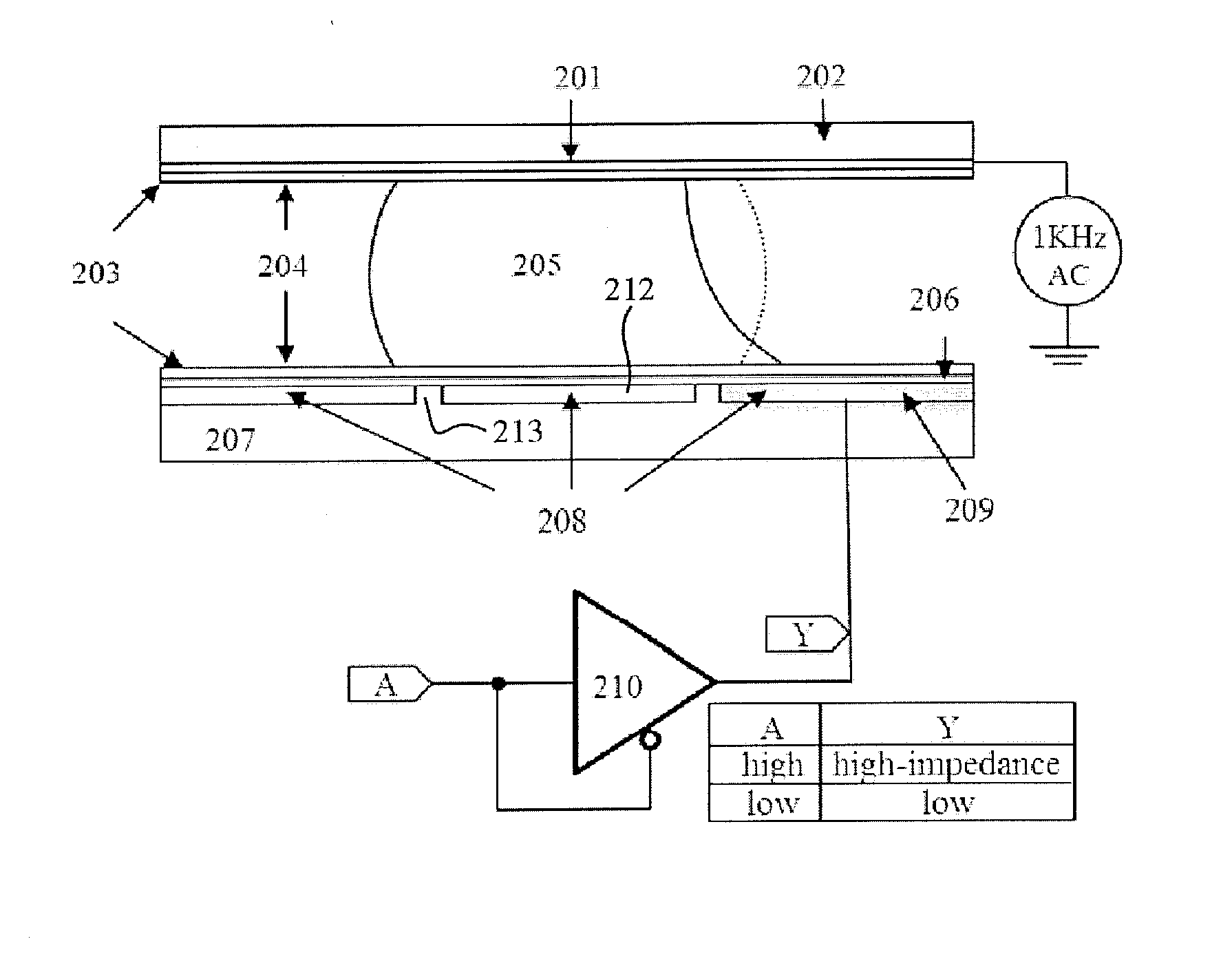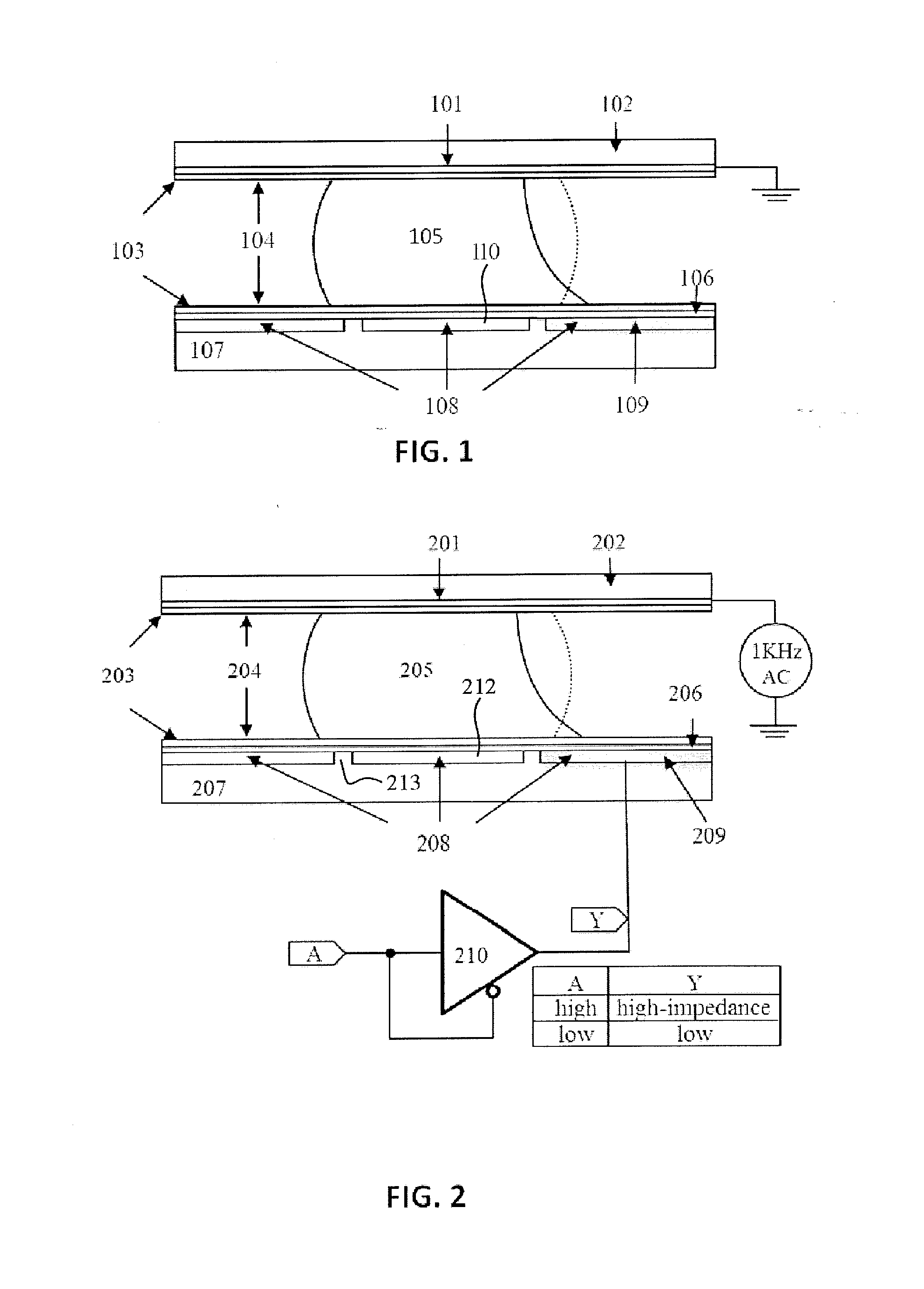High-voltage microfluidic droplets actuation by low-voltage fabrication technologies
a technology of microfluidic droplets and fabrication technologies, applied in the direction of electrolysis components, separation processes, instruments, etc., can solve the problems of high-voltage cell size, high-voltage cmos fabrication technologies, and excessive joule heating, so as to reduce leakage current, increase high-impedance, and increase breakdown voltage
- Summary
- Abstract
- Description
- Claims
- Application Information
AI Technical Summary
Benefits of technology
Problems solved by technology
Method used
Image
Examples
Embodiment Construction
[0026]A conventional electrowetting microactuator mechanism is illustrated in FIG. 1. The digital microfluidic device comprises two parallel plates 102 and 107, respectively, with a distance gap 104. The bottom plate 107 contains an array of individually controllable electrodes 108, and the top plate 102 is coated with a continuous ground electrode 101. Electrodes are able to be formed by a material, such as indium tin oxide (ITO) that has the combined features of electrical conductivity and optical transparency in thin layer. A dielectric insulator 106, e.g., parylene C, coated with a hydrophobic film 103 such as Teflon AF, is added to the plates to decrease the wettability of the surface and to add capacitance between the droplet and the control electrode. The droplet 105 containing biochemical samples and the filler medium, such as the silicone oil or air, are sandwiched between the plates to facilitate the transportation of the droplet 105 inside the filler medium. In order to m...
PUM
 Login to View More
Login to View More Abstract
Description
Claims
Application Information
 Login to View More
Login to View More - R&D
- Intellectual Property
- Life Sciences
- Materials
- Tech Scout
- Unparalleled Data Quality
- Higher Quality Content
- 60% Fewer Hallucinations
Browse by: Latest US Patents, China's latest patents, Technical Efficacy Thesaurus, Application Domain, Technology Topic, Popular Technical Reports.
© 2025 PatSnap. All rights reserved.Legal|Privacy policy|Modern Slavery Act Transparency Statement|Sitemap|About US| Contact US: help@patsnap.com



